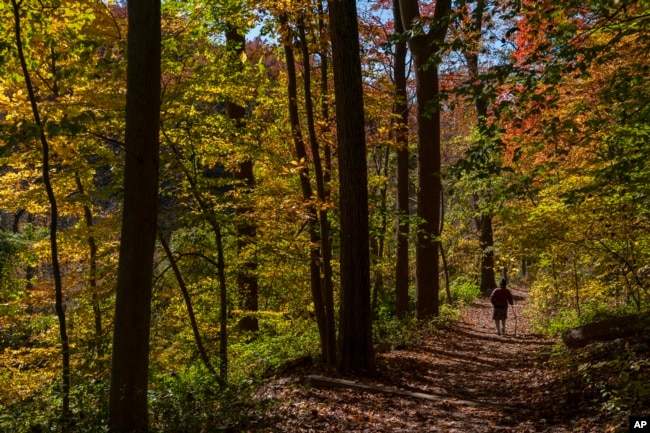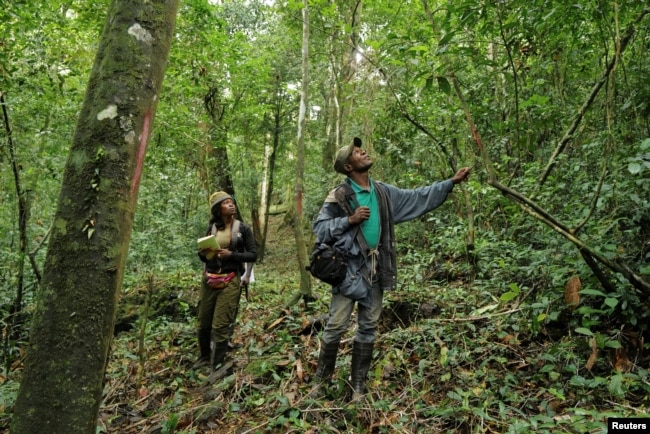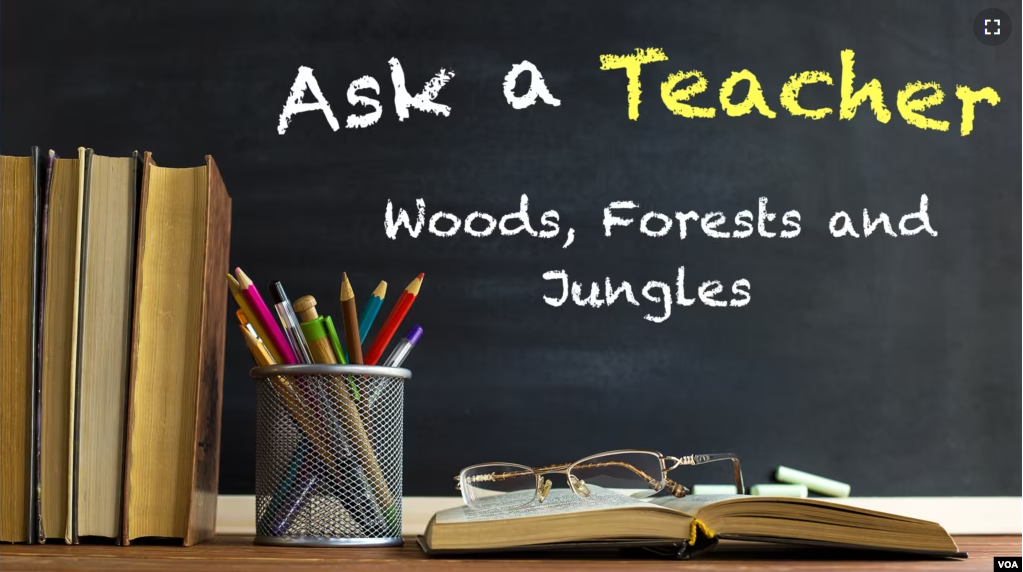Hello! This week on Ask a Teacher, we answer a question about the difference between “woods,” “forests,” and “jungles.”
Question:
Hello Teacher!
This is Sumaira from Pakistan.
I have been listening to the podcast since August 2022. I am so glad that it helps me to improve my listening skills.
I want to ask you about the difference between the words “woods,” “forest” and “jungle.”
Thanks,
Sumaira
Answer
Thanks for writing to us, Sumaira. I love this question because I grew up playing in the woods a lot as a child.
Let’s start with the word “woods”
Woods
Woods are areas covered with tall growing trees. They are smaller than a forest. The word appears in the singular form, “a wood,” especially in British English.
The main difference between “woods” and a “forest” is the size of the land area and the amount of ground fully covered by trees called the canopy. There are several definitions for a forest. The U.S. National Vegetation Classification system classifies a forest as having 60 to 100 percent of the land covered by the tree canopy. The same system says “woods” are classified as having only 25 to 60 percent of the land covered by the tree canopy. A wood can be small so long as it is bigger than a grouping of trees.

Forests
A “forest” is a larger area where tall trees grow close together largely covering the ground below. There are three main kinds of forests found around the world.
The first are temperate deciduous forests. Deciduous means that the trees’ leaves turn different colors and fall off each year. These forests exist where the climate has four seasons and the temperature changes throughout the year.
Many forests in Europe, the United States and parts of Canada are temperate deciduous forests. Animals that you would find in these forests include bears, deer, squirrels, owls and snakes.
Boreal forests are found in colder climates that often have freezing temperatures. They are found in places around the Baltic Sea, Siberia, Northern Canada and Alaska. Animals you would find in a boreal forest include reindeer, moose, Artic hares, wolves and wolverines.
Tropical forests are found near the equator in warmer, more humid climates. These forests experience two seasons, a rainy season and a dry season. In some tropical forests, the trees’ leaves will fall off in the dry season just like deciduous forests. Tropical forests are found in places like India, Northern Australia, parts of Mexico and Bolivia and and in northwestern South America, on the Pacific Coast.
This brings us to our next word, which is “jungle.”

Jungle
The word “jungle” is a common term, not a scientific one, for forests found in the tropics. They are very dense and have a lot of undergrowth which means many of the plants and vegetation grow close to the ground. This undergrowth becomes tangled together and is extremely difficult to walk through.
Animals you would find in a tropical jungle include primates like gorillas and monkeys; birds like parrots; and reptiles like tropical snakes and lizards.
Sometimes the word “jungle” is used to describe a rainforest. But a rainforest is another kind of forest. It has high rainfall throughout much of the year. The largest tropical rainforest is the Amazon Rainforest in South America. There are also temperate rainforests in the Pacific Northwest in the United States.
Please let us know if these explanations and examples have helped you, Sumaira.
What question do you have about American English? Send us an email at learningenglish@voanews.com
And that’s Ask a Teacher.
I’m Faith Pirlo.
Faith Pirlo wrote this lesson for VOA Learning English.
__________________________________________________________________
Words in This Story
classify – v. to organize things into groups by their type, size, or qualities
temperate – adj. moderate climate that lacks extremes
boreal – adj. of or relating to northern areas and regions
tropical – adj. of or occurring in the tropics
equator – n. an imaginary line drawn around the earth equally distant from both poles, the parallel of latitude
vegetation – n. plants in general: plants that cover a particular area
tangle – v. to become or cause (something) to become twisted together
